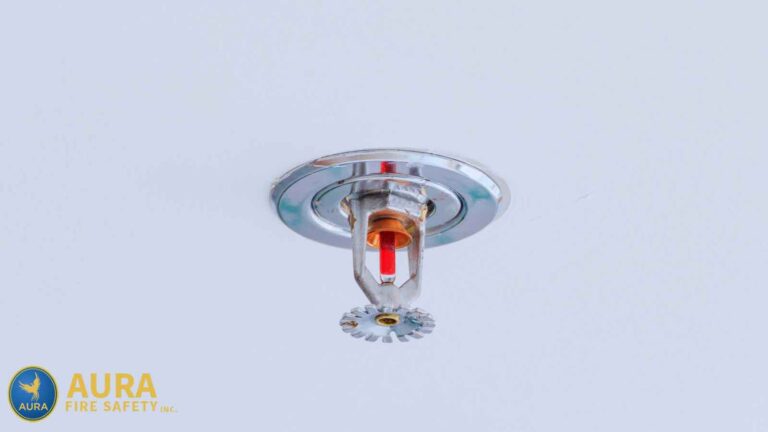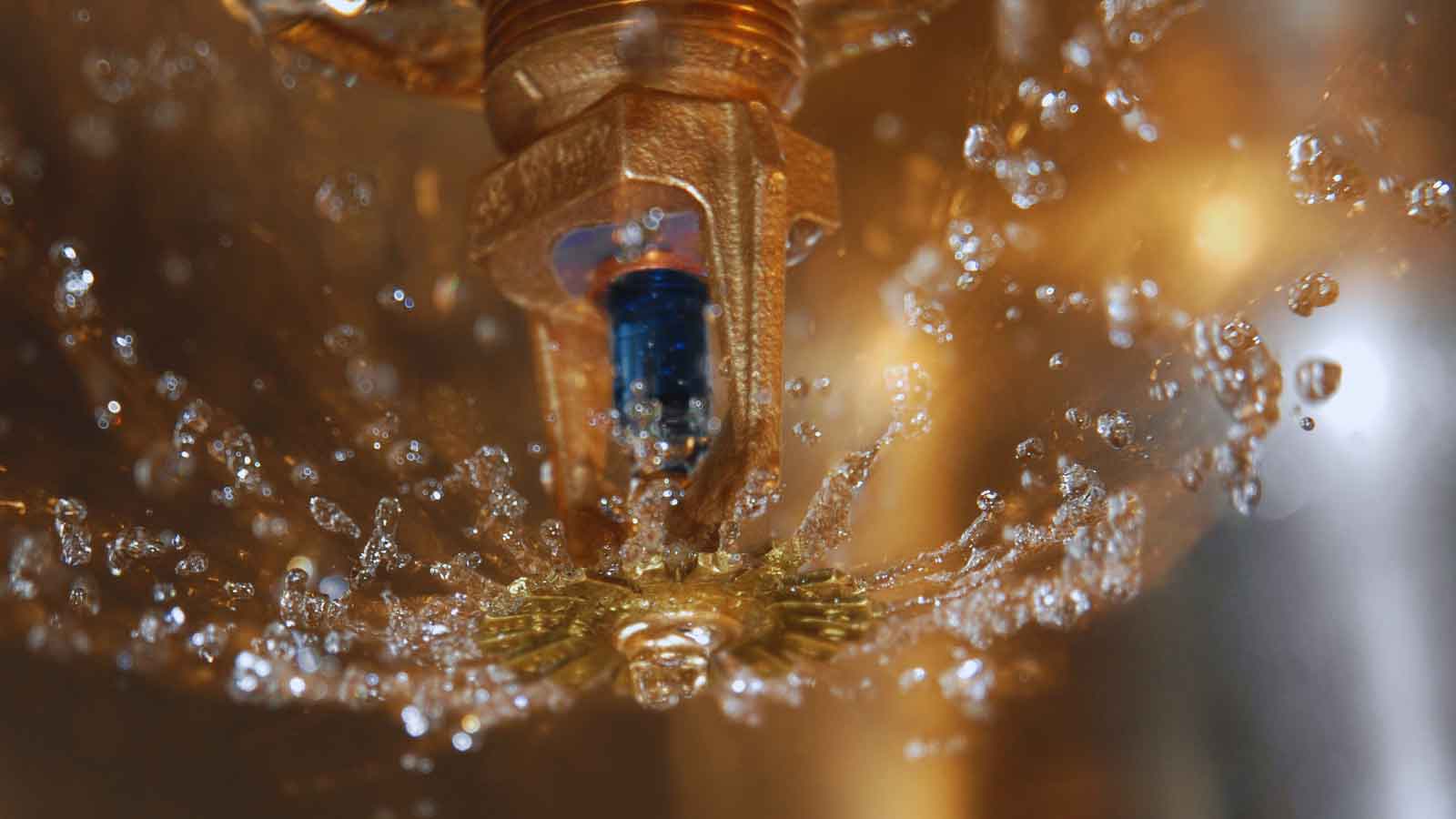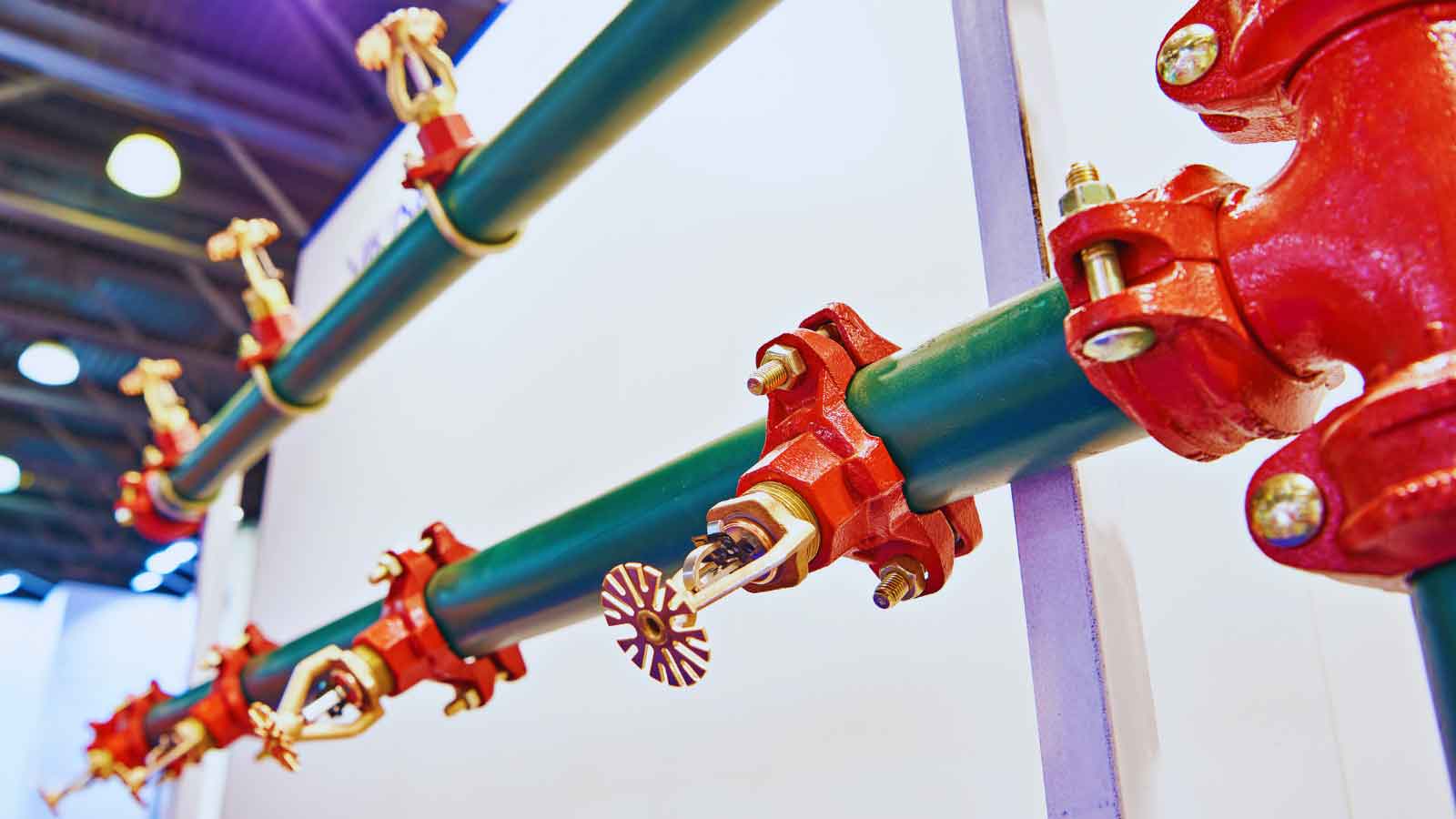When it comes to fire safety, most building owners assume their sprinkler system is up to code until an inspection proves otherwise. Whether you manage a multi-unit residential building or a commercial property in the San Francisco Bay Area, staying compliant with NFPA 25 isn’t just about checking a box.
Get in Touch for Fire Protection Services
Thorough fire sprinkler inspections, regular testing, and detailed records are essential parts of compliance. Inspections keep systems up to code and confirm that each component is capable of functioning during an emergency.
Hidden Signs Your Sprinkler System Isn’t Compliant
Just because your sprinkler system hasn’t triggered an alarm doesn’t mean it’s fully operational or compliant. Many systems appear fine on the surface but fail to meet the standards outlined in NFPA 25. Property managers often don’t realize there’s a problem until an inspection uncovers deficiencies, leading to re-inspection fees or insurance issues.
Missed inspections, overlooked valves, or lack of proper records can all contribute to non-compliance. Even systems initially installed correctly can fall out of spec without continued oversight. Recognizing early signs of non-compliance can help avoid unnecessary repairs and maintain operational continuity.
Common signs your system may not be compliant
Compliance lapses are often subtle and easily missed without a professional evaluation. Here are some of the most common indicators:
- Missed quarterly, annual, or 5 year inspections
- Control valves that are closed, damaged, or lacking supervision
- Sprinkler heads that are corroded, painted over, or obstructed
- Incomplete or outdated service records and tags
- Visible leaks, physical damage, or deterioration in system components
- Gaps in required testing for your residential fire sprinkler system or commercial fire sprinkler system
If any of these red flags apply to your building, it’s a strong sign that your system may need a comprehensive inspection by a licensed fire protection professional.
NFPA 25 Inspections Explained and Applied
Many building owners and property managers are aware of NFPA 25 but don’t fully understand how it applies to their systems or the risks of neglecting it. NFPA 25 is not just a recommendation; it is the national standard adopted by jurisdictions to regulate the inspection, testing, and maintenance of water-based fire protection systems.
Adhering to this standard ensures your fire sprinkler system remains in working order and can protect lives and property when a fire occurs. Understanding NFPA 25 is important because it defines how inspections are performed, how deficiencies are reported, and how systems must be maintained over time.
It is the framework that local authorities having jurisdiction (AHJs) use when evaluating Title 19 compliance during annual fire inspections in California. Failing to comply can result in violations, penalties, and a lapse in insurance coverage.
What does NFPA 25 cover?
NFPA 25 outlines the inspection, testing, and maintenance requirements for all types of water-based fire protection systems, including commercial fire sprinkler systems and residential fire sprinkler systems. Its scope includes:
- Scheduled inspections of control valves, sprinklers, piping, and other system components
- Functional testing of water flow, alarms, supervisory switches, and pump systems
- System integrity requirements, such as ensuring valves are open, components are free from obstruction, and heads are free from corrosion or mechanical damage.
- Recordkeeping protocols, requiring up-to-date inspection reports, test results, and documented corrective actions
This standard serves as the minimum performance benchmark. Failure to meet any part of it can result in the system being classified as non-compliant. AHJs enforce these provisions during annual audits and random inspections.
What happens during an NFPA 25 inspection?
An NFPA 25 inspection is a detailed, multi-step evaluation that confirms your system’s operational readiness. Inspections are broken down by component type and inspection frequency. During a standard annual visit, certified technicians perform the following tasks:
- Visual assessment of all sprinkler heads, piping, fittings, hangers, bracing, and valve positions to verify compliance with physical and operational standards
- Water flow testing to confirm system activation and measure pressure and volume at designated test points
- Pressure gauge readings to ensure pressure retention is within required thresholds
- Alarm and supervisory device testing, including control panels, switches, and notification systems
- Review of inspection tags and maintenance history to verify that previous deficiencies were corrected and all records are complete and current
- Identification and classification of deficiencies, detailing what needs to be addressed and the urgency of each item
Technicians also evaluate access to key components, check for proper signage and labeling, and ensure that the system integrates properly with alarms. Any non-compliant findings are documented in a formal deficiency report that must be addressed in order to be certified. A proper NFPA 25 inspection is not just about regulatory compliance. It is a comprehensive confirmation that your fire protection system can perform reliably and that your facility is ready for emergency response.
How Often Should You Inspect Your System?
Get in Touch for Fire Protection Services
Many property owners think a single annual inspection is enough, but NFPA 25 requires multiple inspections throughout the year, each targeting specific components. These inspections detect early signs of malfunction, wear, or failure, ensuring the system is ready when needed.
Skipping any required inspection compromises system reliability and can lead to enforcement actions and system failure.
Required inspection schedules
To remain compliant with NFPA 25, inspections must be completed at the following intervals:
- Monthly: Inspect control valves to verify they are in the correct position and adequately supervised. Check pressure gauges on wet pipe systems to confirm accurate readings.
- Quarterly: Test water flow alarms, supervisory signal devices, and control valves for functionality. These tests help identify potential issues with response time and signal transmission.
- Annually: Perform a complete fire sprinkler inspection, which includes visual and mechanical checks of all system components. Verify the operation of alarm interfaces, check pipe integrity, and inspect for leaks, corrosion, or obstruction.
- Every 5 Years: Conduct internal pipe inspections to identify obstructions, scaling, or microbial growth that may affect water flow. This evaluation ensures that pipes remain clear and capable of delivering water effectively.
Each inspection type serves a specific purpose. Skipping or delaying any of them compromises the reliability of the fire protection system and puts occupants and assets at risk. These requirements are not optional but enforced standards with direct safety and legal implications.
What Happens If You’re Not Compliant?
Compliance failures do more than trigger a deficiency notice. They create significant risks for building owners, property managers, and occupants. A non-compliant fire sprinkler system can expose a property to regulatory action, insurance complications, and legal liability, especially if a fire occurs and the system fails to operate correctly.
Whether due to skipped inspections, incomplete documentation, or unresolved deficiencies, non-compliance has measurable consequences that go far beyond inconvenience.
Failing to maintain a compliant fire protection service schedule can result in:
- Re-inspection fees and permit delays: Local fire departments may require corrective action and charge fees for each re-evaluation.
- Increased insurance premiums or denied claims: Insurance providers may raise rates or reject claims if a non-compliant system contributes to fire-related damages.
- Lawsuits or liability claims: Building owners and managers can be held legally responsible if a failed system leads to injury, death, or property loss.
- Occupancy restrictions or disruptions: Tenants or operations may be affected if the property is deemed unsafe until corrective action is completed.
A single oversight can trigger a chain of complications. Ensuring that inspections are performed on schedule and deficiencies are addressed promptly is critical to maintaining operational continuity and life safety.
Staying Compliant Year-Round
Compliance isn’t something you handle once and forget. It requires ongoing inspections, accurate documentation, and a trusted partner who knows how to keep your system up to code. With regulations evolving and inspection timelines varying, working with a knowledgeable provider is the most effective way to maintain year-round readiness and avoid costly setbacks.
Choosing the right fire protection partner
Not all fire protection companies offer the same level of service. Some may handle inspections but leave property owners scrambling to find another provider for system repairs or upgrades. When choosing a provider, look for one that can both inspect and correct issues efficiently. This ensures your system meets compliance requirements without unnecessary delays or added coordination.
Key qualities to look for include:
- Experience with both fire alarms and fire sprinkler systems
- A track record of accurate Title 19 documentation
- Fast, reliable communication and clear reporting
- Knowledge of local AHJ requirements and inspection protocols
- Transparent pricing with no surprise charges
This is where Aura Fire Safety delivers. Backed by over 28 years of experience in the San Francisco Bay Area, Aura provides full-service support for fire sprinkler design, inspection, repairs, and compliance reporting. Whether managing a single building or a portfolio of properties, you’ll have a partner who makes compliance easy, efficient, and dependable.
Ready to stay ahead of inspections and avoid costly delays? Contact Aura Fire Safety today to schedule your next NFPA 25 inspection with a trusted team.
Get in Touch for Fire Protection Services



